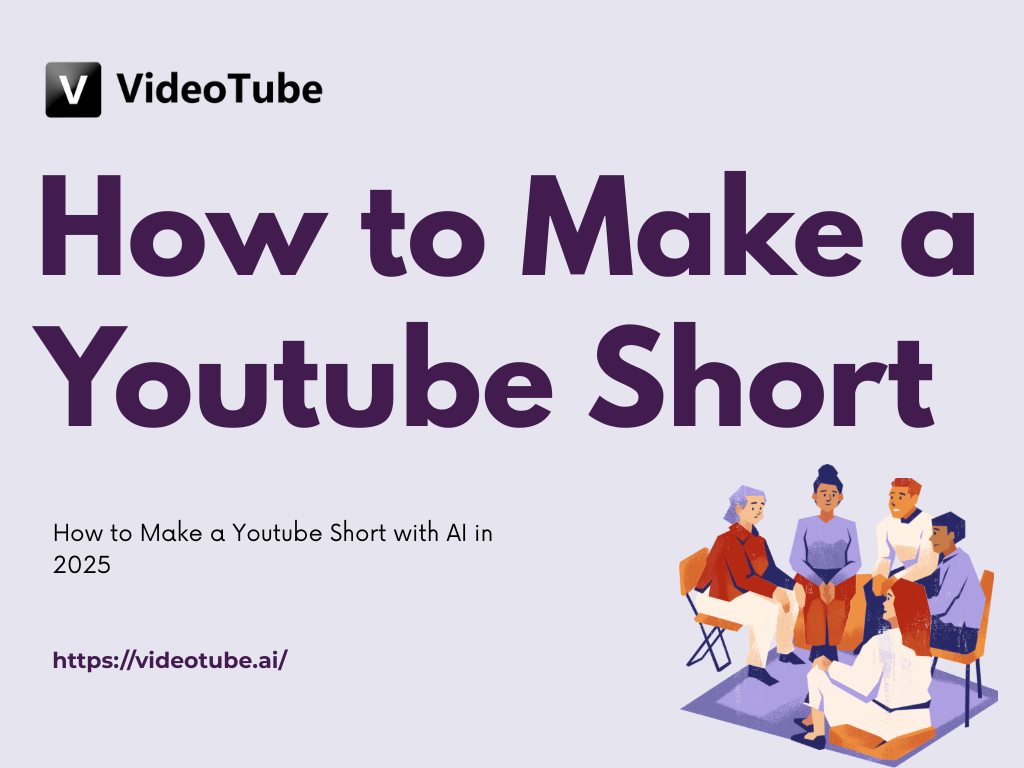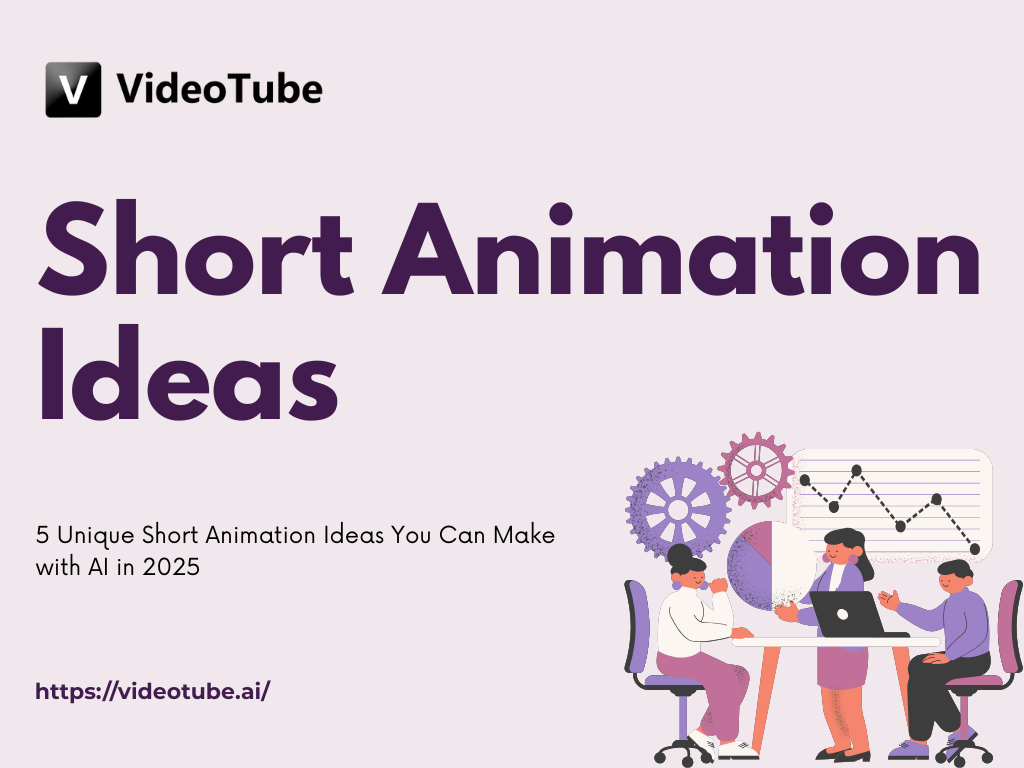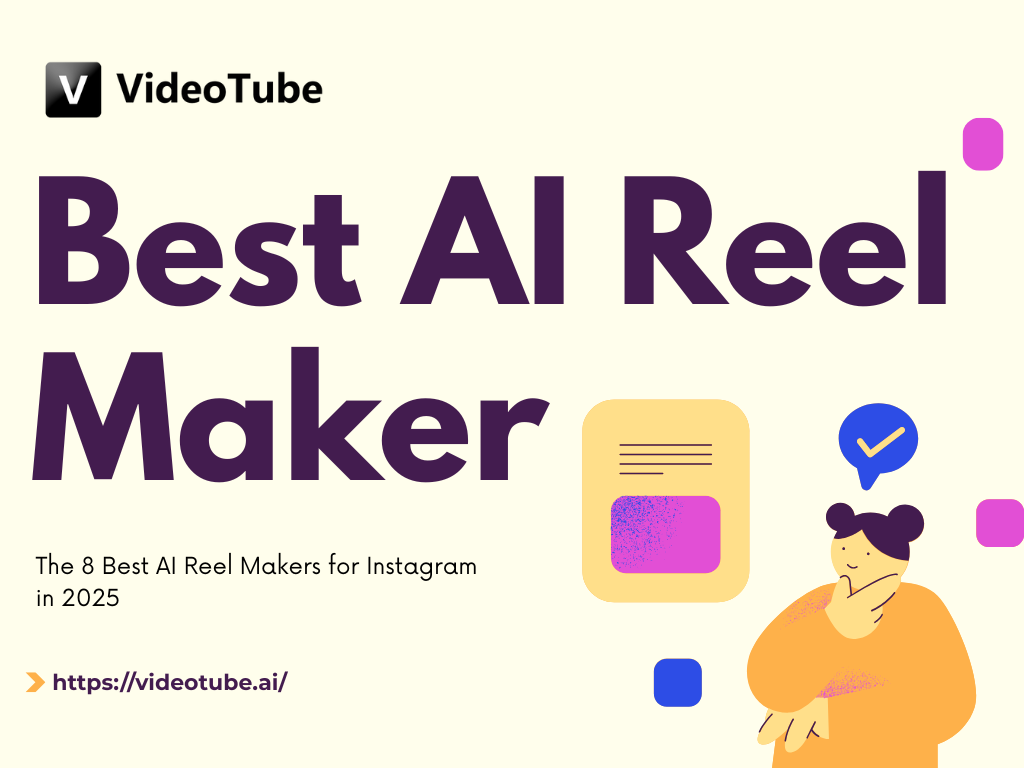AI Clone Yourself: Ultimate Guide to Digital Twin in 2025
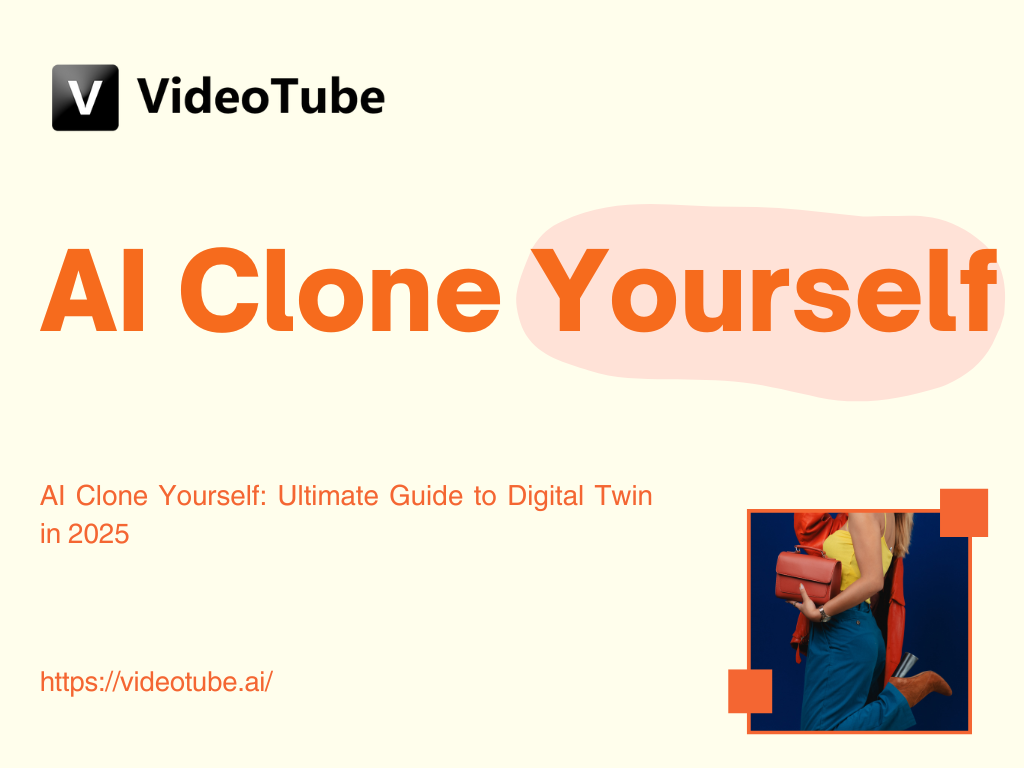
- What Does “AI Clone Yourself” Mean?
- How AI Cloning Differs from Traditional Digital Avatars
- Why People Use AI Clone Yourself Tools
- Best AI Clone Yourself Apps and Platforms in 2025
- Step-by-Step Guide to AI Clone Yourself
- Benefits and Challenges of AI Cloning
- Ethics and Legal Considerations
- Conclusion
What Does “AI Clone Yourself” Mean?
The simplest way to describe it: AI clone yourself tools use advanced algorithms to replicate aspects of your personality, voice, facial expressions, and mannerisms in digital form. These clones can be deployed across multiple platforms — social media, customer service bots, even virtual meetings.
Unlike a simple avatar or profile picture, AI cloning isn’t static. It’s dynamic. The technology doesn’t just show your face; it can talk like you, move like you, and respond in real-time. For instance, VideoTube recently showcased how creators can upload a few minutes of audio and video, and the system builds a clone capable of narrating entire YouTube Shorts without additional input. This makes it look as if you recorded hundreds of videos personally — even when you’re out hiking or on vacation.
At its core, AI cloning combines deep learning models, voice synthesis, and facial animation to create what’s essentially your “digital twin.” Some platforms even allow memory embedding — meaning your clone can “remember” things you’ve taught it, like brand values, inside jokes, or customer FAQs.

How AI Cloning Differs from Traditional Digital Avatars
You might be thinking: Isn’t this just like making an avatar in a game? Not quite. Traditional digital avatars are largely cosmetic — a cartoon version of you that doesn’t speak unless you do. AI clone yourself tools, on the other hand, add intelligence and autonomy.
- Traditional avatars are static: you design a look and use it manually.
- AI clones are dynamic: they can generate speech, react to new situations, and operate without you constantly feeding them inputs.
Imagine the difference between a profile picture and a holographic assistant that delivers a presentation on your behalf. The former is decorative; the latter is functional. This is why businesses are increasingly adopting AI clones for marketing, customer support, and influencer collaborations — it feels real, not staged.
Why People Use AI Clone Yourself Tools
The reasons vary wildly, from convenience to creativity to pure curiosity. Some do it to save time; others to explore what “being digital” feels like. Here are the most common motivations:
Content Creation and Social Media Automation
Content creators often joke about needing “clones” to handle their insane posting schedules. With AI clone yourself platforms, that joke becomes reality. Instead of filming every TikTok, YouTube Short, or Instagram Reel manually, you record once, train the clone, and let it handle variations — different scripts, languages, or formats.
Platforms like VideoTube have popularized this for short-form content: you upload your likeness, provide scripts, and the AI generates dozens of videos that look like you’re personally engaging with your audience, even while you’re offline. It’s not just efficient; it’s scalable storytelling.
Virtual Assistants for Work and Business
Here’s the deal: Imagine you’re tied up in a board meeting, but your AI double is out there handling client emails, running webinars, maybe even onboarding new hires—all at the same time. Companies are jumping on this “clone yourself” technology. They’re building digital stand-ins for executives, trainers, sales teams—basically anyone who needs to interact with clients nonstop, minus the burnout.
For distributed teams working across time zones, this changes the game. Now, a founder can be in multiple meetings simultaneously, trainers can deliver personalized sessions by the dozens, and customer service suddenly feels more attentive without ballooning headcount. It’s a smart way to scale up without stretching your people too thin.
Gaming, VR, and Entertainment Applications
Gamers and VR enthusiasts love AI clones for an entirely different reason: immersion. Imagine playing an RPG where your in-game character literally looks and talks like you — not a generic hero, but your face, your expressions. In VR social platforms, clones are used for performance art, concerts, and even virtual meet-and-greets with fans.
Entertainment companies are experimenting with AI cloning for personalized trailers or interactive films where you become the protagonist. The future of storytelling might not just break the fourth wall — it might invite you into the story entirely.
Personal Memory and Legacy Preservation
Not all uses are flashy. Some are deeply emotional. Families are beginning to explore AI clone yourself technology to preserve voices and memories of loved ones. Imagine creating a digital clone of a grandparent, complete with their stories and quirks, so future generations can interact with them long after they’re gone.
While this raises ethical questions (which we’ll explore later), the sentimental value is undeniable. It’s less about creating “immortality” and more about archiving personality in a way photos and videos never could.
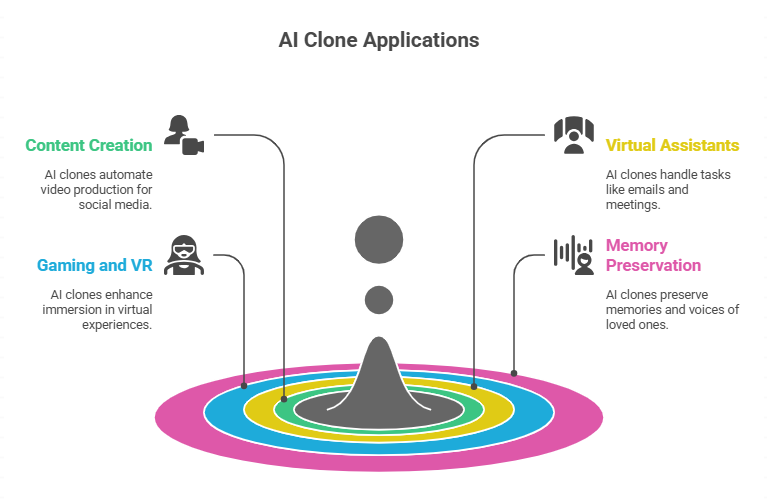
Best AI Clone Yourself Apps and Platforms in 2025
By 2025, the market for cloning tools has exploded. From free mobile apps to enterprise-level solutions, options exist for hobbyists, influencers, and Fortune 500 companies alike.
Top Free AI Clone Apps
Free tools are a solid starting point if you’re looking to experiment without breaking the bank. Here’s the rundown:
- Reface AI – A favorite for face-swapping in short video clips or memes. It’s surprisingly accurate for quick projects.
- D-ID Free Tier – Good choice for basic talking-head videos made from still images. Straightforward and easy to use.
- HeyGen Lite – Lets you clone voices and videos quickly, ideal for social media intros or bite-sized content.
That said, these options come with some clear drawbacks: limited customization, and you’ll be living with watermarks. Handy for testing, but not quite ready for primetime production.
Paid Professional Tools for Digital Twins
If you’re genuinely considering building a digital twin for business purposes, the paid platforms are where you’ll find serious sophistication and control.
- Synthesia stands out in the corporate sector—ideal for training modules that require highly realistic video presenters.
- Colossyan is the go-to if your operations are global; it delivers multilingual digital clones, which is incredibly useful for international marketing.
- VideoTube caters to content creators and brands who need ultra-realistic avatars and seamless integration with social posting platforms.
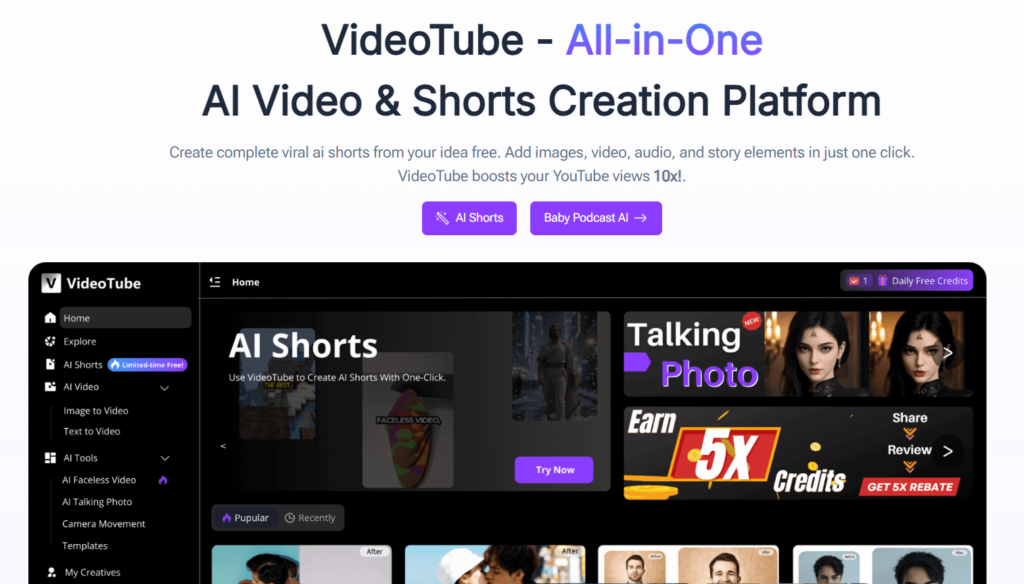
Investing in these paid solutions typically brings stronger privacy measures, high-definition rendering, and—perhaps most notably—the ability for your digital twin to learn and improve over time. It’ll pick up on your accent, mannerisms, and even your sense of humor, allowing the technology to represent your brand with increasing authenticity.
Comparison: Features, Pricing, and Accuracy
When comparing tools, focus on three factors:
- Accuracy – Does the clone actually feel like you? Or does it fall into the uncanny valley?
- Pricing – Free may be tempting, but professional features (like emotion mapping) often justify the cost.
- Integration – Can the tool plug into your workflow — YouTube, TikTok, Zoom — without extra hassle?
A hybrid strategy works best: experiment with free tools, then upgrade once you find your style.
Step-by-Step Guide to AI Clone Yourself
Cloning yourself isn’t complicated, but doing it well requires planning. Here’s a proven workflow:
Preparing Photos, Voice, and Data
- High-Quality Photos: Use clear, front-facing images with neutral lighting. Avoid filters; the AI learns best from reality.
- Voice Samples: Record at least 3–5 minutes of natural speech. Include emotional variety — serious, cheerful, conversational.
- Data Input: Some platforms allow text uploads (emails, social posts) to capture tone and vocabulary.
Training Your AI Model
Simply upload your materials to the selected platform. For a basic clone, the process might be wrapped up in minutes. If you’re opting for a more advanced, behavior-heavy model, expect it to take several hours. The AI thoroughly examines your facial features, voice, and expressions, assembling all those elements into a composite digital profile.
Testing and Deploying Your Clone
Once training is complete, generate test videos or audio clips. Look for mismatches: does the voice sound robotic? Does the lip-sync align with speech? Make adjustments before publishing widely.
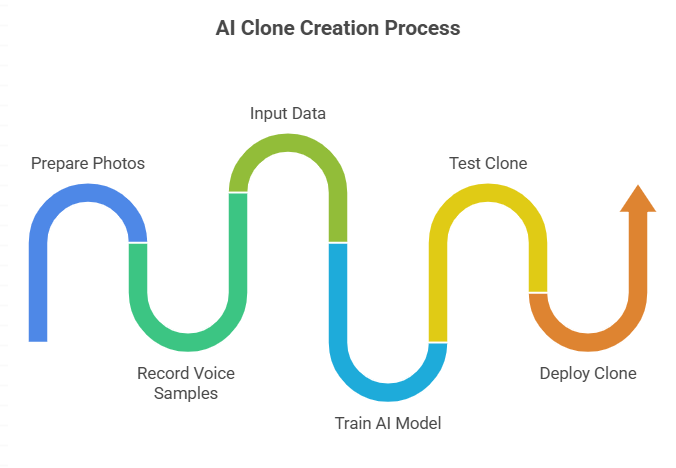
Tips for Improving Realism and Accuracy
Even the best AI clone yourself tools can look uncanny if you rush the setup. To make your digital twin truly convincing:
- Use varied expressions during training – Smile, frown, raise an eyebrow. The AI learns your emotional range better when you feed it diversity.
- Record in a quiet space – Background noise confuses voice models and results in robotic tones. A closet full of clothes makes a surprisingly great DIY sound booth.
- Provide context, not just data – Some platforms allow metadata tags (e.g., “enthusiastic greeting” or “formal tone”). These hints help your clone adapt to scenarios instead of repeating canned lines.
- Test in different scenarios – Use your clone for both casual and professional outputs. What works on TikTok might feel awkward in a corporate meeting.
- Remember: cloning isn’t just about looking like you; it’s about feeling like you. A realistic clone mirrors your quirks, not just your face.
Benefits and Challenges of AI Cloning
The promise of AI cloning is exciting, but like all technology, it’s a double-edged sword.
Advantages for Individuals and Businesses
- Time Multiplication – Imagine delivering customer support, creating weekly videos, and attending virtual conferences simultaneously. Your AI clone makes that possible.
- Global Reach – Tools like VideoTube able clones to speak multiple languages without you learning them, breaking geographical barriers overnight.
- Consistency – Your digital twin maintains brand tone and message 24/7, unlike human energy that fluctuates with mood and fatigue.
- Creativity Boost – With repetitive tasks delegated to your clone, you focus on big-picture ideas: campaigns, product launches, storytelling.
Risks: Privacy, Ethics, and Misuse
Alright, let’s get down to business—digital cloning isn’t just a shiny new toy, it comes with a laundry list of risks.
- Privacy Issues – Who’s actually in control of your digital replica’s data? If a hacker gets in, your likeness could be used for fraud or scams faster than you can say “identity theft.”
- Ethical Questions – Is it mandatory to label AI-generated clones? And what’s the protocol if someone creates your virtual twin without your green light? That’s a legal headache waiting to happen.
- Psychological Effects – Seeing yourself (or, worse, a lost loved one) “saying” things you never agreed to is more than unsettling. It can be downright disturbing for families and individuals alike.
The challenge? Find that sweet spot where you can leverage cutting-edge innovation without leaving your identity—or your company’s reputation—hanging out to dry.
Future Trends in AI Digital Cloning
By 2030, experts predict AI clone yourself technology will move beyond video and voice into behavioral AI — clones that adapt and learn continuously, almost like parallel versions of you living online. Integration with AR glasses and VR worlds could mean having your clone attend classes, manage businesses, or even play games on your behalf.
We’re heading toward an era where “being everywhere at once” isn’t hyperbole — it’s Tuesday.
Ethics and Legal Considerations
The ethical landscape around AI cloning is honestly kind of a minefield. Who’s in charge of your likeness? Is it you, or do companies just get to run wild and cash in on your digital double? Picture this: Your AI-generated self pops up in some ad campaign, and you’re left wondering if you ever gave the green light. And watermarking—are we seriously talking about tagging every AI-made human with a “synthetic” label? There’s no clear roadmap here, but, really, it’s time for some solid policies before things spiral. This is more than a tech issue—it’s a business and legal headache waiting to explode.
Consent and Ownership Issues
In the realm of cloning—digital or otherwise—consent isn’t just a formality; it’s fundamental. Individuals should have clear authority over where and how their clone is utilized. Some platforms have already implemented robust consent mechanisms, such as digital contracts that outline specific permissions for each use case. That said, the legal landscape hasn’t fully adapted yet, so there are still some gray areas that organizations need to navigate carefully.
AI Cloning in Different Countries’ Regulations
European Union (EU) – GDPR already gives individuals strong control over personal data, and discussions are ongoing about extending this to biometric AI.
United States – Laws vary by state; California and Illinois have specific rights around image and voice usage, but federal regulation is lacking.
Asia (China, Japan, Korea) – Rapid adoption of AI clones in entertainment, but regulatory frameworks are evolving piecemeal.
If you plan to deploy your clone internationally — especially for business — review regional laws carefully to avoid unintended violations.
Conclusion
So, should you take the plunge and AI clone yourself? The answer depends on your goals. If you’re a creator drowning in content demands, a business owner seeking scalable customer engagement, or someone who just wants to experiment with futuristic tech, the answer might be a resounding yes.
But go in with eyes wide open: treat your digital twin like an extension of yourself, not a gimmick. Set boundaries, review privacy settings, and ensure you — not some.
